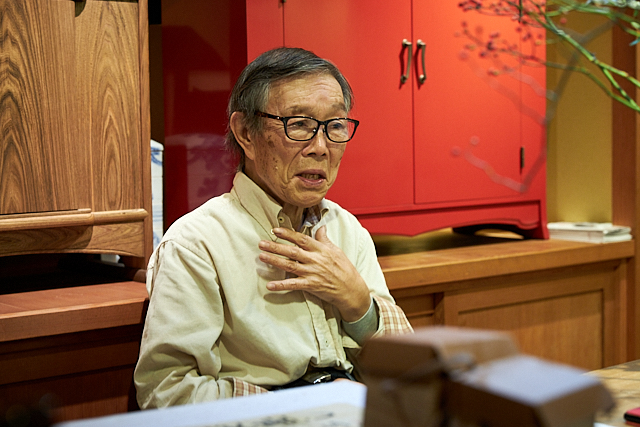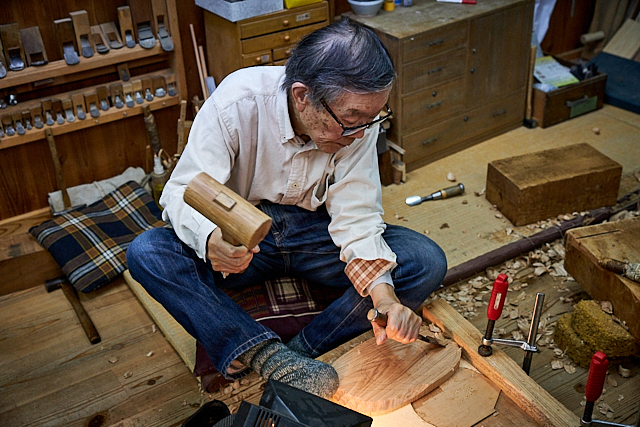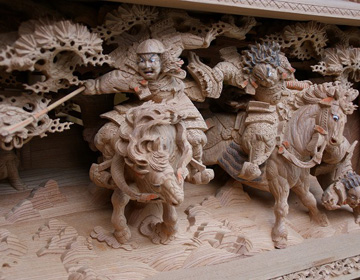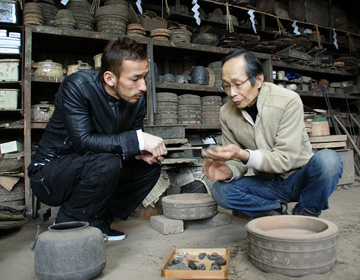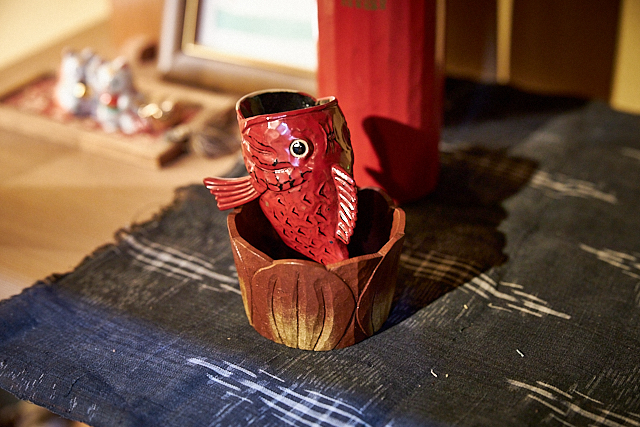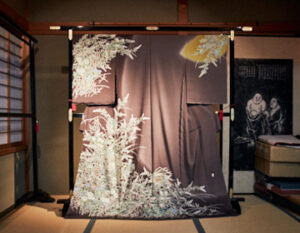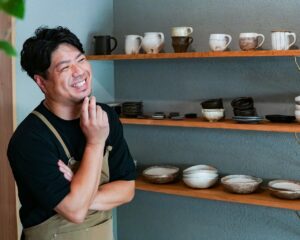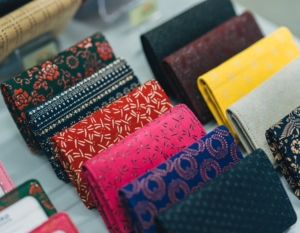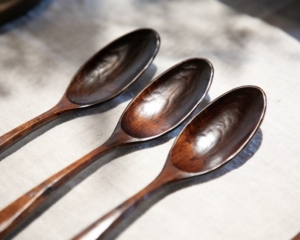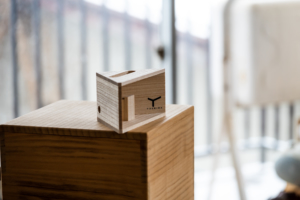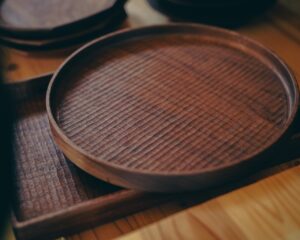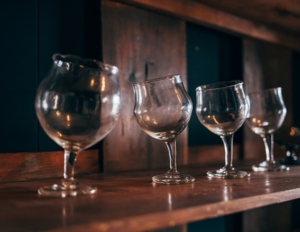A wood lacquer craftsman who pursued the beauty of use
Minami-Senba, Chuo-ku, Osaka City. On the third floor of a building not far from Matsumacho-suji Shopping Street, which is lined with more than 100 wholesale stores and specialty stores selling hina dolls, toys, candy, and other items, is wooden lacquer craftsman Kazumasa Fujiwaki’s workshop, “Tsuchi Kobo. Once you pass through the door, you will find yourself in a different world from the hustle and bustle of the surrounding area. The shelves are lined with beautiful and warm works of art. From furniture such as tea chests to small tea utensils, these simple folk art pieces look as if they were simply carved out of wood and coated with lacquer. The simplicity of these pieces, however, makes their beauty of form stand out.
Born in Maizuru City, Kyoto Prefecture in 1943, Mr. Fujisaki began his career as a woodworker at the age of 15, training in Toyama and studying under the late Tatsuaki Kuroda, a living national treasure in 1967. In 2009, he was awarded the Prince Takamatsu Memorial Prize at the 56th Japan Traditional Crafts Exhibition, and in January 2011, he was recognized as the first craftsman designated by Osaka Prefecture as an Intangible Cultural Property, Wood Crafts Holder.
He has been a major figure in the world of woodworking for more than 50 years, pursuing the “beauty of use,” yet he continues to present his own works, saying, “I’m still not satisfied with anything, korekara, korekara. When you hold it in your hand, it feels very comfortable. Many of his works are not for display, but for daily use.
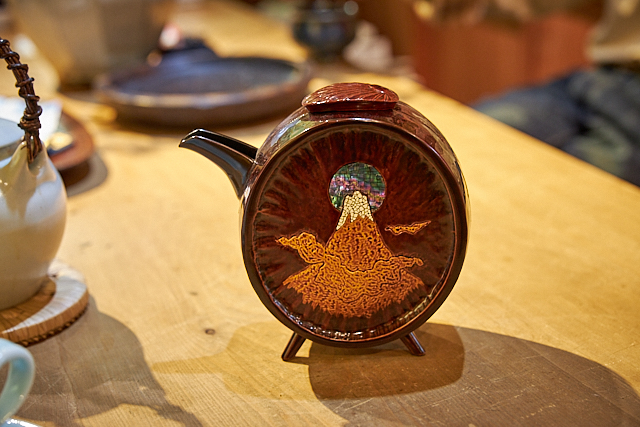
Originality created by the Fujisaki style
I believe that crafts are made to be used. The process of making a product begins by thinking about when and how it will be used,” says Mr. Kawasaki. This allows him to pursue originality, unlike many other workshops where the work is divided between different departments. Even if it takes a long time to complete a piece of work, it is the Kawasaki way to create a satisfying piece of work.
A tour of the back of the building reveals a workshop lined with chisels and saws. Although the building is not spacious, it is a functionally designed space where apprentices face the wood. Mr. Nakada, would you like to try your hand at it? Nakada is of course willing to try it. Of course, Nakata was willing to try. He immediately took a chisel and a mallet and started to make trays. You can’t do it by force,” he said. You have to watch the grain of the wood as you chisel it,” said Mr. Kawasaki, as he gradually shaved the board like a chopping board. At first, the chisel was slippery and the mallet did not hit the board well, but gradually the chiseling became more rhythmic. Nakata’s face was sweaty, even though it was autumn. Nakada’s face was sweaty, even though the season was autumn. It’s difficult to find the right amount of force.
As he concentrated on his work, several hours passed in the blink of an eye. Mr. Fujisaki has continued this meticulous and careful handwork for 50 years. I felt as if I had caught a glimpse of the value of something that should be cherished and passed on for a long time.
